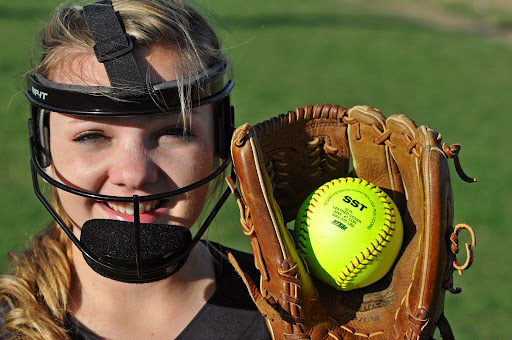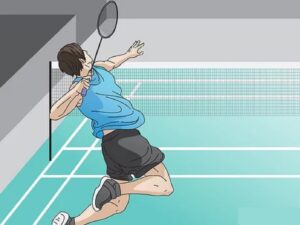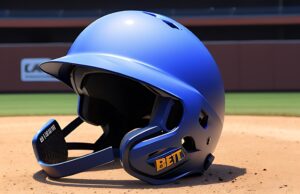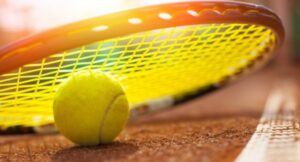Softball is a fun and exciting sport that requires players to be agile and quick on their feet. However, with the game’s fast-paced nature, players are susceptible to getting struck in the face by a softball. The impact of a ball hitting the face can cause severe harm and, in some cases, even lead to permanent facial disfigurement. So, why do softball players wear masks?
To prevent or reduce such injuries, softball players often wear masks that act as protective shields. These masks cover the face and protect against potential damage caused by fast-moving softballs. This safety gear is an essential element of the sport, enabling players to enjoy the game without worrying about the risk of facial injuries. In this article, we’ll explore the reasons softball players utilize masks and how the equipment helps keep them safer on the field.
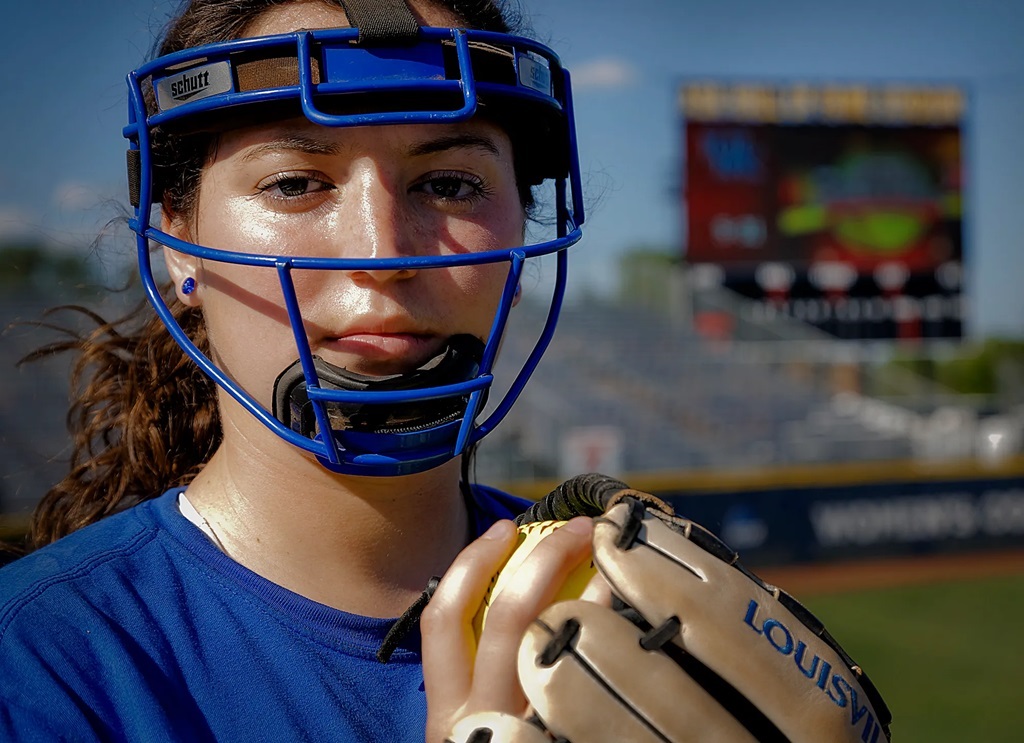
Protecting Against Facial Injuries
The primary purpose of softball masks is to prevent damage to the face. Softballs travel high speeds during games, often over 60 mph for competitive adult play. A ball hitting facial bones or soft tissue at that velocity can inflict severe trauma.
Standard softball facial injuries that masks aim to prevent include:
- Fractured bones – cheek, nose, eye socket, jaw
- Damaged teeth – cracked, displaced, knocked out
- Eye injuries – corneal abrasions, retina damage
- Concussions
- Lacerations – to skin, lips, etc.
By covering vulnerable face areas, masks absorb and deflect ball impact. Made from metal, plastic, or carbon fiber, masks distribute and dampen the force when balls make contact. This protects the soft tissues and bony structures underneath from blunt force trauma.
Pitchers and catchers are at the most significant risk, given their proximity to hit balls. They universally wear complete face cage protection. Other infielders also commonly wear at least partial faceguards, as they, too, play close to batted balls. Outfielders generally opt for minimal or no masks since they play far from the batter. But even outfielders are at some risk when retreating for hard-hit fly balls.
Overall, masks provide an essential layer of protection for players’ eyes, nose, cheeks, mouth, and teeth. This allows them to play with greater focus, confidence, and safety.
Improving Visibility
In addition to protection, softball masks enhance players’ vision and ability to track the ball. Masks improve visibility in a few key ways:
- The cage contrasts the ball and the background, making it easier to pick up.
- Mask cross-bars help block peripheral distractions and focus vision ahead.
- Masks reduce glare from sunlight, which can make seeing difficult.
- Openings fitted with shades help regulate light intensity in different settings.
Players can judge balls more accurately with improved visibility from reduced glare and distractions. Softball demands quick reaction time, so optimized vision gives athletes an advantage.
Mask visibility does come with some trade-offs. Larger full cage designs can obstruct peripheral vision somewhat. But most modern masks allow sufficient sight lines for safe, competitive play.
Different Mask Styles
There are various styles of softball masks, balancing protection, visibility, and coverage areas. Common types include:
- Full Face – Complete protection from forehead to chin, favored by pitchers and catchers.
- Half Mask – Covers eyes, nose, and upper cheeks. It is used by infielders who need a blend of visibility and protection.
- Eyewear Mask – Lightweight shield for eyes only. Allows excellent mobility for outfielders.
- Hockey-Style – Adapted from ice hockey, with a wire cage for the eyes and a plastic shield for the lower face.
Materials also vary. Metal cages provide the most coverage but can get hot. Plastic is lighter but less durable over time. Carbon fiber offers strength with minimal weight. Wire grants excellent airflow and vision.
The suitable mask depends on the position, climate, league requirements, etc. However, all approved masks meet safety standards when fitted and maintained correctly.
Proper Mask Fit and Care
To work as intended, softball masks must be:
- Properly fitted – snug but comfortable, doesn’t shift during play.
- Well maintained – inspected for defects, cleaned regularly, parts replaced when worn.
- Correctly used – worn as mandated by league rules and regulations.
- Properly stored – kept safely away from extreme temperatures and damage.
With consistent upkeep and replacement as needed, masks will provide optimal protection year after year. Players should take care to keep masks in serviceable condition.
Masks also must meet safety standards as certified by organizations like NOCSAE. Certified equipment has passed impact testing to help reduce the risks of significant injuries like fractures and hemorrhages. Using a mask that meets current safety guidelines is critical.
Mask Usage Rules and Requirements
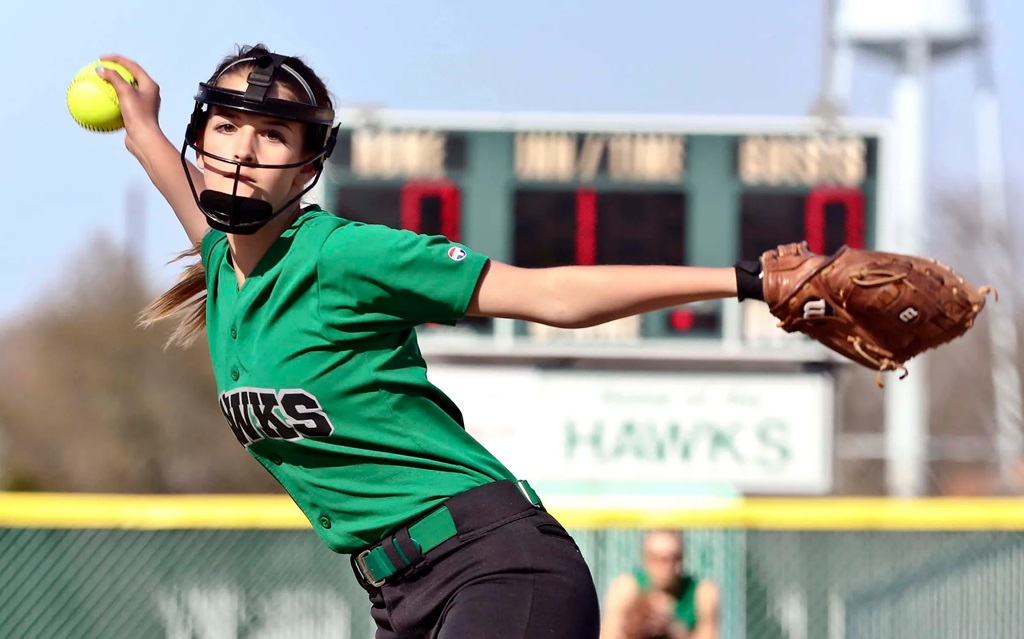
Most organized softball leagues now mandate masks for certain positions, especially pitchers, catchers, and youth players. National governing bodies like ASA/USA Softball and the NCAA have instituted mask policies to minimize facial injuries.
Coaches and league officials can advise on required protective equipment. While masks may feel uncomfortable initially, players soon adapt to the benefits of playing with reduced risk of trauma. Following the mandated guidelines provides essential injury prevention and meets legal liability requirements.
Reasons Some Players Decline Masks
Despite their protective purpose, some players still avoid masks due to:
- Discomfort – masks can feel hot, distracting, and claustrophobic.
- Visibility concerns – though often unwarranted with modern mask designs.
- Cost – masks do represent an added expense for players on tight budgets.
- False confidence – feeling invincible against injury.
- Peer pressure – wanting to look tough or not give in to teasing.
However, experts strongly emphasize wearing appropriate masks, especially for younger athletes. A momentary lapse in judgment can lead to severe and regrettable consequences over the long term.
Conclusion
Softball masks protect players against facial trauma from high-velocity balls. Models with full cages, half guards, or eye shields reduce injury risks. With proper fit and care, masks absorb and deflect impacts away from vulnerable facial structures. Learning how to wear a baseball helmet with a jaw guard properly is crucial for safety, complementing league mandates on masks to prevent broken bones, dental injuries, eye damage, and head trauma, ensuring softball players adapt and play the sport with confidence and security.
FAQs
1. Why do infielders and pitchers wear masks in softball?
Protection is key. Like pitchers and infielders, softball players near the batter wear masks to protect their faces from line drives (hard-hit balls coming directly back at them) and bad hops off the ground. These can cause severe injuries to the face, teeth, eyes, and head.
2. Are face masks mandatory in softball?
Not always. While face masks are highly recommended for infielders and pitchers, it depends on the league, age group, and rules in place. Some leagues make them mandatory, particularly for younger players.
3. What kind of injuries can softball face masks prevent?
A wide range. Masks can prevent broken noses, fractured cheekbones, lost teeth, eye injuries, concussions, and other severe head and facial traumas.
4. Can wearing a face mask affect a player’s vision or performance?
Minimally. Modern softball masks are designed to provide excellent visibility while offering solid protection. There may be a slight adjustment period, but most players quickly adapt without their performance being hindered.
5. Do outfielders need to wear face masks?
Usually not. Although hard-hit balls can strike outfielders, the distance from the batter generally lessens the risk enough that face masks are not as standard for outfield positions.

